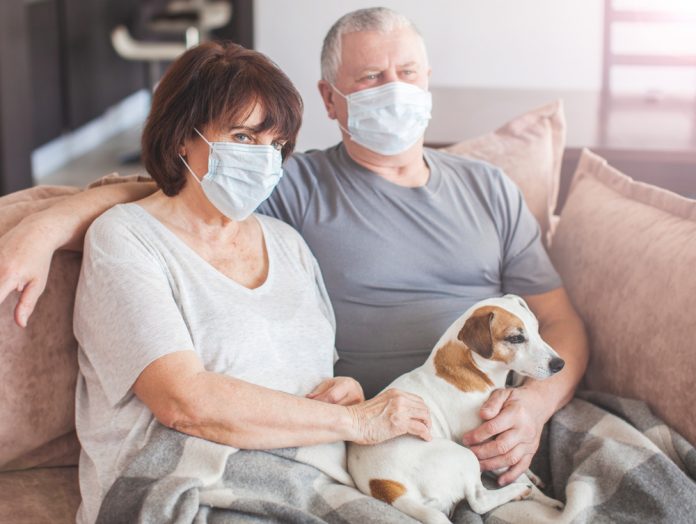On March 11th, 2020, the World Health Organization (WHO) declared the novel coronavirus a global pandemic. Since that time, the number of confirmed COVID-19 cases continues to climb daily, with over 3.8 million confirmed cases and approximately 266,000 deaths worldwide as of April 7th, 2020. The United States is now at the center of the pandemic with over 1.25 million cases and 75,000 deaths. The rate at which the virus is continuing to spread is alarming, leaving healthcare systems overwhelmed. Many countries now have strict guidelines in place to contain the disease and flatten the curve of infections. Healthcare personnel are working around the clock treating patients with COVID-19, especially those with severe illness. While many eventually recover, elderly patients, often with multiple chronic diseases, are most at risk for severe illness, says Dr. Albert Chmielewski. Having a diverse population of patients ranging from pediatric to geriatric as a family medicine physician, Dr. Chmielewski is seeing the devastating effects of COVID-19 and explains why certain individuals are more susceptible to the novel coronavirus than others.
COVID-19
COVID-19 is the disease caused by the SARS-CoV-2 (Severe Acute Respiratory Syndrome Coronavirus-2) virus explains, Dr. Albert Chmielewski. The first outbreak of COVID-19 was reported in December of 2019 in the Wuhan region of China and officially brought to the attention of the World Health Organization on December 31st. Since that time the virus has rapidly spread to over 180 countries involving every continent except Antarctica. COVID-19 is a respiratory disease that is spread through close contact, for example: via respiratory droplets, or by touching a surface with the virus on it and touching your mouth, nose, or eyes. The US currently has the highest total of confirmed cases in the world, and many states have implemented various measures to help prevent the spread of the virus; these include avoiding close contact, practicing appropriate hand hygiene, wearing face masks in social settings, and cleaning and disinfecting frequently touched surfaces on a regular basis.
The US is working hard to flatten the curve and keep the number of cases from rising exponentially; however, individuals need to understand that COVID-19 is extremely infectious, and government, state, and local guidelines must be followed to reduce the spread of the disease. For those that do become infected, they may or may not have symptoms, which is why mitigation strategies have been implemented. If a patient does not show symptoms, they are more likely to continue with daily activities where they may unknowingly spread the virus to others. Symptoms of COVID-19 infection include fever, cough, shortness of breath, sore throat, headache, chills or repeated shaking with chills, loss of taste or smell, and body aches and pains. Those with severe illness may experience symptoms such as trouble breathing, chest pain, confusion, and if oxygen saturation falls too low, bluish discoloration of the lips or face. For those patients requiring hospitalization or intensive care, the primary goal is to help keep patients breathing to allow for proper oxygenation and treating other possible complications such as pneumonia, blood clots, uncontrolled bleeding, and acute kidney, liver, or heart injury.
The Elderly and COVID-19
Multiple studies from affected countries around the globe show that illness severity and admissions to the intensive care unit for respiratory support increase drastically with age. A morbidity and mortality report from the United States published on April 14th found that among patients hospitalized with COVID-19, 74.5% were above the age of 50, and 43.4% were aged >65 years old. Another analysis from mainland China published on March 31st showed that 86.4% of patients older than 50, and 55% of patients older than 70 required hospitalization. Evidence and research have shown that there is a clear correlation between age, severity of disease, and hospitalization rate. Another startling example of this has been seen in Italy which has the highest median age in all of Europe, with almost a quarter of their population above the age of 65; it is no surprise then that they have been fighting such an uphill battle, says Dr. Albert Chmielewski, with an exceedingly high mortality rate of approximately 14.0%. Dr. Albert Chmielewski explains that these patterns are being seen due to two primary reasons; first, as a person becomes older their immune system does not function as well, and secondly, due to the presence of comorbid conditions.
Reduced Immunity and Comorbidities as Risk Factors for Disease Severity
The key here lies in the fact that our immune response diminishes over time and our body become less capable of recognizing novel diseases such as COVID-19, a phenomenon called immunosenescence explains Dr. Albert Chmielewski. Our immune system consists of two basic constituents, an innate response that is immediate, and a delayed but robust adaptive immunity that involves the proliferation of multiple cells and creation of antibodies; both systems are integral to fighting off pathogens like the novel coronavirus. The adaptive immune response is particularly important in dealing with COVID-19, unfortunately, it becomes less proficient at fighting infections as we age; specialized cells of the immune system begin to decrease in number over time, and this depletion leads to the reduced ability to recognize newer pathogens and mount an effective response against them. Several other factors can also negatively affect our immune system and therefore our ability to fight off disease; these factors include lack of sleep, poor diet, chronic disease, immunosuppression, and stress.
Aside from the direct effects of a weakened immune system on susceptibility, elderly patients tend to have more chronic illnesses such as diabetes, hypertension, COPD, and kidney disease. Over time these chronic conditions cause “wear-and-tear” on our body, therefore reducing functional capacity of multiple organ systems, making an individual increasingly more prone to infection and complications from viruses like COVID-19. A recent report published by the CDC in April revealed that in the US 89.3% of hospitalized adults had one or more underlying condition; the most frequently reported being hypertension, followed by obesity, chronic lung disease, diabetes, and cardiovascular disease.
At times overlooked, but equally important, are social factors that play a role in increased susceptibility. Many older patients, especially ones with comorbidities, live in retirement or long-term care homes, which are often crowded and pose a significantly increased risk of being infected. Even for the elderly population that does live at home, many live alone or with another senior partner, and it can be difficult for them to fully self-isolate especially since they, like most others, must go out into the public for necessities such as groceries or prescriptions.
Dr. Albert Chmielewski reminds individuals to do their part by avoiding contact with elderly neighbors, friends, and loved ones as best as they can and to take the necessary precautions to mitigate the spread of COVID-19. Ultimately, he is hopeful that with social distancing measures, regular use of masks or gloves, and appropriate hand hygiene practices, residents of the United States will be able to significantly flatten the curve.
Find a Home-Based Business to Start-Up >>> Hundreds of Business Listings.
















































